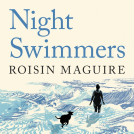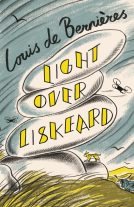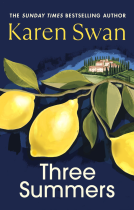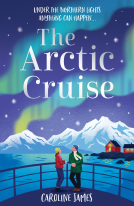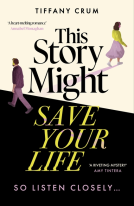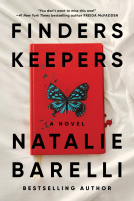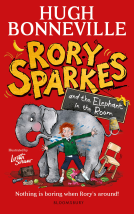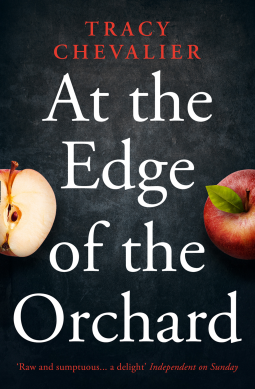
At the Edge of the Orchard
by Tracy Chevalier
This title was previously available on NetGalley and is now archived.
Send NetGalley books directly to your Kindle or Kindle app
1
To read on a Kindle or Kindle app, please add kindle@netgalley.com as an approved email address to receive files in your Amazon account. Click here for step-by-step instructions.
2
Also find your Kindle email address within your Amazon account, and enter it here.
Pub Date 10 Mar 2016 | Archive Date 1 Apr 2022
HarperCollins UK, HarperFiction | The Borough Press
Description
'A wonderful book; rich, evocative, original. I loved it' Joanne Harris
“One in ten trees comes up sweet…”
In the inhospitable Black Swamp of Ohio, the Goodenough family are barely scratching out a living. Life there is harsh, tempered only by the apples they grow for eating and for the cider that dulls their pain. Hot-headed Sadie and buttoned-up James are a poor match, and Robert and his sister Martha can only watch helplessly as their parents tear each other apart. One particularly vicious fight sends Robert out alone across America, far from his sister, to seek his fortune among the mighty redwoods and sequoias of Gold Rush California. But even across a continent, he can feel the pull of family loyalties…
Available Editions
| EDITION | Ebook |
| ISBN | 9780007350414 |
| PRICE | £5.49 (GBP) |
Average rating from 56 members
Featured Reviews
 Lesley N, Reviewer
Lesley N, Reviewer
Why has it been so long since I read something by Tracy Chevalier? I must have forgotten how good she is. This book was so atmospheric and seemed more true to what America must have been like in the mid 19th century than what you see in movies and on TV. Why anyone would choose to settle somewhere like the Black Swamp is beyond me - the name says it all. The only reason can be exhaustion from having travelled so far!
The characters were sympathetically drawn and grew through the story. I loved the way Robert's letters improved with his level of learning. The inclusion of Johnny Appleseed was also interesting as he is someone even non-Americans have heard of.
Altogether an intelligent and well-written book.
 jane l, Educator
jane l, Educator
I always love Tracy Chevalier - she has such a deft touch with historical fiction, bringing the world of whatever time she sets her tales in to life so vividly. This novel about American pioneering in the 1800s is full of the richness of growth alongside the privations of poverty and I was entranced by her vision. One scene had me craving apples, so evocative was her description of a Golden Pippin.
The structure was interesting too - some epistolary chapters, some told through the viewpoints of alternating characters, building tension and enlisting the reader in their lives. Some of it was wrenching: a young girl writing of her rapes as men being 'unkind', the euphemism making the act even more horrible; the central relationships so flawed and human and violent that you can't help empathising while you deplore them.
I love to learn as I'm being entertained and Chevalier makes this possible in At the Edge of the Orchard. I kept Wikipedia close as I discovered Johnny Appleseed, the redwood and sequoia groves, mining towns and a bustling, dirty San Francisco - if she makes me want to learn more about aspects of the world she writes about, then I think an author is doing a great job of enriching my world.
 Sandra M, Reviewer
Sandra M, Reviewer
Chevalier is a wonderful auther. Her books use historical facts to build amazing stories and this one is no exception. The story begins in earnest describing life in the Black Swamps of Ohio. The descriptions of the people, the land and the apple trees are so real, as I read I could smell the swamp land and the AppleJack belly fire it causes. Being married to an American I knew bits about Johnny Appleseed and found his involvement so interesting. The added interest of a family nine patch quilt being made of old bits and pieces that could not be wasted, the fact that apple slices were left to dry on it, it went on the bed it really was a working quilt that was fast becoming tattered with so much family love.. The devastation that forces Robert to leave shows the tough life and its possible outcomes. Once Robert leaves the story spreads across the USA at a time when travel was not easy and charlatans plagued the people.
The final part brings everything so beautifully together and culminates with a traditional fairy tale ending that only this author can succeed so well at.
I highly recommend this book to anyone who loves historical based stories.. I am now on the search to taste the main two named apples so that I can also taste the pineapple after effect. Great book, well written and worth more than five stars.
It is 1838 and the Goodenough family have been working the difficult land at Black Swamp, Ohio for almost a decade. They must create an orchard of fifty trees to stake their claim over their patch. The apple trees they grow are partly ‘spitters’ used for making cider and partly delicious ‘eaters’. James Goodenough is a taciturn man who works hard and loves his trees. His wife Sadie is a raucous drunk who cares only that the spitters can provide her with cider and applejack. Many of their children have died of the swamp fever that comes around each year. Those left are divided in their loyalities between their father and mother, though most of the time there is little love evident from either parent.
Into this dysfunctional household comes occasionally a real historical character, John Chapman, known as Johnny Appleseed. Appleseed sells saplings and seedlings and disagrees with James Goodenough’s ideas on grafting believing it’s interfering with nature. Sadie enjoys his company and the applejack he brings.
The story of this family is told through a variety of voices one of which is the youngest son Robert’s. Robert has left home for unspecified reasons and travels west picking up odd jobs until he meets William Lobb, a seed agent (and another real historical character). Once again trees, this time giant sequoias and redwoods, enter the tale. Robert has a secret which is not revealed until well into the novel and his desertion of home stems from this traumatic incident in his childhood. When this event is finally revealed it is both shocking and inevitable.
The writing is superb, of course, being at times lyrical and at times gritty. The characters are well drawn, particularly James and Sadie, opposites determined to fight to the bitter end, yet sometimes strangely loyal. Information about trees is presented in a fascinating and never stodgy manner and the hardships of the period are shown realistically. A wonderful book.
 Beverley H, Reviewer
Beverley H, Reviewer
I enjoy Tracy Chevalier books. They are always well written with intriguing stories - this is no exception. Although the story is quite downbeat it brings out the true spirit of the people of the time. It covers the mid 19th century in the American west. I did not realise when I started reading this book that some of the characters were based on actual people and this added to the story.
 Annika P, Reviewer
Annika P, Reviewer
Apples! Only someone of Tracy Chevalier’s calibre can pick such an ordinary fruit and create the most mesmerising, sweeping novel centred around them.
As a huge fan of her earlier books, particularly Girl with a Blue Earring and The Last Runaway, I was positively giddy to be approved by HarperCollins to review her latest creation, At the Edge of the Orchard. I started reading with a great sense of anticipation.
‘They were fighting over apples again.’
Constant war reigns between James and Sadie Goodenough in Ohio in 1838 and onwards as they struggle to turn the inhospitable and aptly named Black Swamp into a successful apple orchard. To James, son of an eminent apple farmer in Connecticut, apples and their trees are an obsession and are treated with reverential care and none more so than his beloved Golden Pippen, a sweet-tasting ‘eater’.
Meanwhile, his wife Sadie seeks solace from the misery of her life, her losses, in the applejack cider which is made from fresh ‘spitters’ apples.
In the midst of their bitter, self-centred and often violent marriage, ten children are born and many die from the yearly ‘skeeters’ (mosquitoes). Those that survive are more slaves to their parents than children and fend for themselves in the brutal harsh world. It is a gruelling existence which is described in great detail and intensity; I felt as if I suffered with them.
Robert, the youngest son, is striking with his disarming knowing look that unsettles both James and Sadie equally; his quiet diplomacy at times succeeds in calming the household even though he is also interested in the apples. Martha meanwhile is a sickly child, who nevertheless runs the family ‘home’ and she is pithily described by Sadie as:
‘Martha was the runt of the litter, the only weak one left who hadn’t died. She hummed all the time, hymns to block out the sounds of Deaths footstep behind her.’
This example is just one of the variety of brilliant narrative techniques used by Tracy Chevalier in this book. Her skilful entwining of narrative voices creates a fully immersive read and it starts with a close third person (James’s) point of view interwoven with the simpler, colloquial, childlike, even bawdy and misspelt first person voice of Sadie. I felt I was involved in an intimate conversation with her at some stages.
Altogether there are five chapters, each from a different era though some do overlap. One chapter is a masterful collection of Robert’s yearly (unanswered) letters back home following his sudden departure from Black Swamp as a child, describing his intriguing and tough adventures over seventeen years as he heads further west. The mystery as to the cause of his sudden departure is not revealed until much later, however. His life is vividly portrayed as he enters the Gold Rush in California and ultimately ends up working for Willian Lobb, a famous tree collector.
Whilst the first section of the book deals deftly with details of apple grafting, growth, picking, the second section centres around the grand sequoia of California and of Robert’s life with them. The description of the sequoia that Robert first encounters is awe-inspiring and I can visualise the whole scene exactly.
Throughout the book, Tracy Chevalier expertly weaves fact with fiction, including the then recently discovered Calaveras Grove in California. Billie Latham built the infamous stage on the stump of first giant sequoia, named The Discovery Tree, to be cut down at the Grove. As a tree agent, Robert becomes responsible under William Lobb to collect seeds and saplings to send to James Veitch, an English nurseryman for the stately homes in the UK.
The rough pioneering life of California is recreated brilliantly with the raw hard life in San Francisco captured in minute detail whilst evoking the enthralling enticing allure of the wildlife. Robert is forced to forgo his lonely existence when one day a visitor brings the haunted past dramatically back to him.
The characterisation in At the Edge of the Orchard is superb; there is not a single false tone or word. Everyone is realistically portrayed although it is hard to feel empathy for certain characters, especially James and Sadie.
The darkness that is all pervasive in the book would be too much without the glint of light and hope in the form of one critical person. Will she become Robert’s saviour and end the desolation that’s blighted the lives of so many?
I fell head over heels for Tracy Chevalier’s latest novel and was swept away by the story. I’m in awe of the electrifying literary writing which remained powerful throughout. Reading the book I was emotionally overwrought as well intellectually savouring the exquisite recreation of nineteenth century Ohio and California. The ending was a crescendo of sorrows and joy. The best book of 2017 – so far!
I received a free copy of this book from NetGalley in exchange for an honest and impartial review. At the Edge of the Orchard is available to purchase although the paperback will be released on 7th February 2017 in the UK and is already for sale in the USA.
Readers who liked this book also liked:
Carine Laforest;
Children's Fiction
